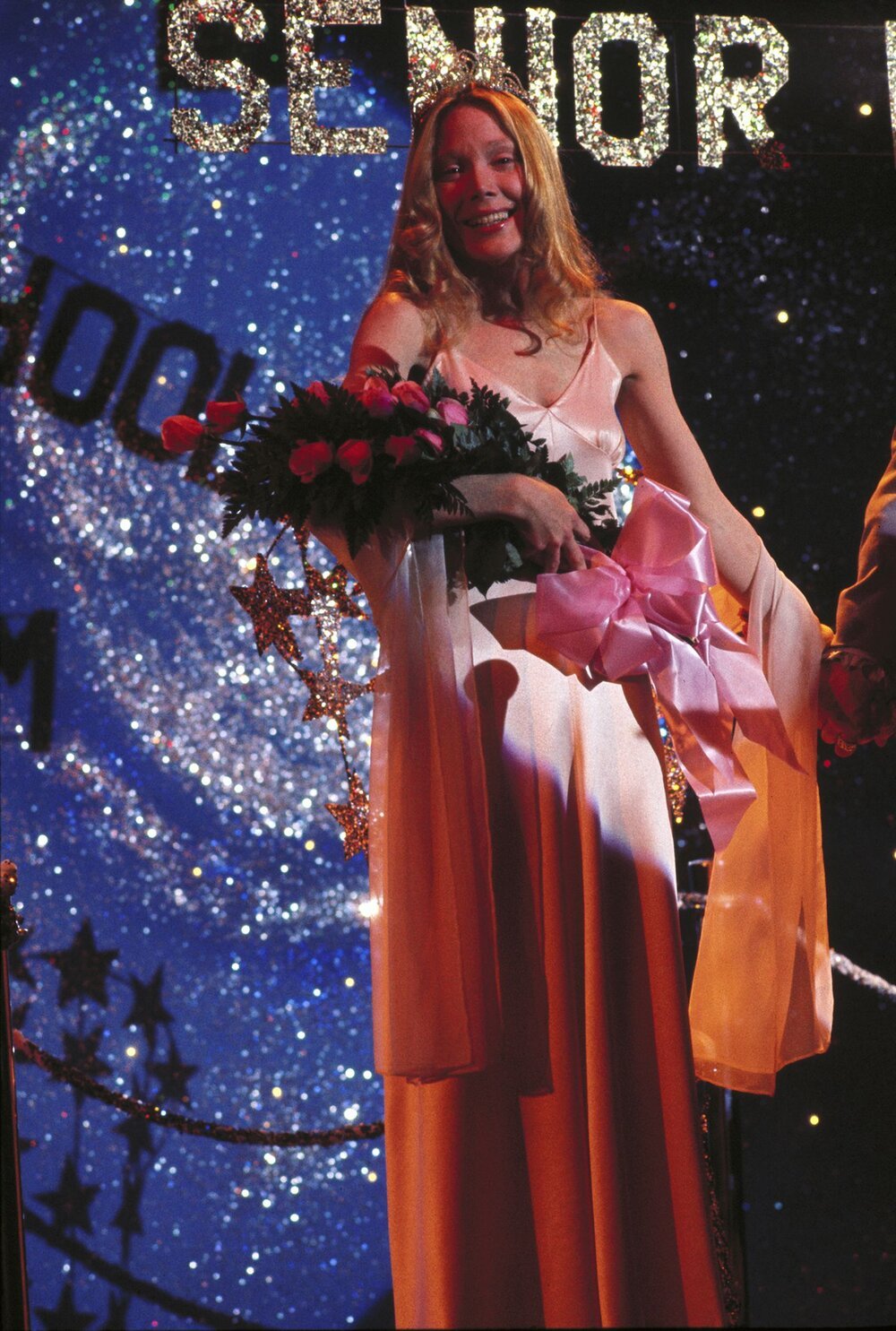God Save the Prom Queen: The Enduring Legacy of Carrie White’s Pink Prom Dress
United Artists
Despite being a rather polarizing genre, horror is more universal than one might think. This is because fear itself is a shared human emotion. We are connected by the experience of growing up and living through the pains of changing bodies, whirlwind emotions and trying to come into your own being in a world that may not only have the space for you. Combine these two things, and you get Stephen King’s Carrie. The 1974 novel follows teenager Carrie White, who is ostracized and ridiculed by her peers at school and abused by a repressive religious fanatic mother who demonizes femininity. After getting her first period in the locker room shower, Carrie awakens to her psychic powers which culminates in the iconic climax of the story. Carrie is crowned prom queen and subsequently doused in pig’s blood, triggering her to massacre the entirety of the student body.
This image of her in a dainty pink gown, drenched from head-to-toe in bright red blood, is ever-enduring in the landscape of pop culture: from being referenced by musicians, Hole and Olivia Rodrigo, to TV shows such as Glee and Daria. The dousing of blood extends to regular teenage girls who sacrifice a pink dress to recreate the look on Halloween night. This dress has cemented its place in our cultural memory.
United Artists
But why?
Before answering this question, it’s important to note that the iteration of the dress found in the novel differs from the now-iconic pink version from the 1974 film by director Brian de Palma. King’s original vision of the dress imagined it as red, being described as a “crushed-velvet prom gown with its princess waistline, juliet sleeves and simple straight skirt”. This is a far cry from the low cut pink satin and empire waistline that has become synonymous with the character.
One reason for why the movie version of Carrie’s dress stuck was due to it’s striking nature. The book’s take on the prom scene evokes the image of red blood on a red dress. Much of the power in the climax lies in the dichotomy of the before and after – happiness versus humiliation. The red-on-red simply does not not drive home this contrast. Seeing the pastel, more feminine pink fabric completely stained by bright scarlet drives home the change that has occurred. Carrie covered in head-to-toe; not an inch of pink is visible any longer. This image is the ultimate portrayal of the climax.
United Artists
It is in how Carrie’s pink dress functions in the larger narrative that really gives the garment its power. On one hand, the dress is a symbol of her rebellion against her mother, an attempt to liberate herself from her repressive upbringing. Rather than being purchased, it is actually hand-sewn by Carrie giving it a personal aspect. It is a physical representation of her own abilities to enact change in her life. Though her mother is adamantly against her attending prom, especially due to finding the dress indecent, Carrie defies her by wearing the dress and going to prom without her approval.
In the gown, she also achieves a sense of normality. Always an outsider, Carrie is seen during most of the movie in frumpy clothes that cover up much of her body. By attending prom, she fits into the normal high school social order, both by simply being in attendance and blending in wardrobe-wise. Furthermore, she achieves peak assimilation when she wins prom queen, a title often relegated to popular girls. Though the vote is rigged, in the moment, she has reached the ideal fantasy teenage girl. No longer othered, she finally feels like she belongs.
As the bucket of blood dropped her illusion shattered. Everyone worries about whether or not they fit in with the norm and this anxiousness is usually at its peak during adolescence. Identity is often unstable here, and there are shared feelings of alienation among teens: being non-cisgender and/or heterosexual, being part of a racial minority, or something as simple as being too shy or having niche hobbies and interests. It’s a scary thing to be the “other”. It can create intense feelings of loneliness and isolation. Most teenagers simply wish to belong somewhere. Without a sense of community and belonging, one can feel completely hopeless and out of place.
Despite its supernatural backbone, the heart of Carrie lies in the rather mundane tale of puberty and growing up. In a way, the prom dress itself encapsulates it all, as prom is often seen as the pinnacle of one’s high school experience. To see it ruined in such a way, plays on the universal fear of being othered. Carrie spent a large portion of her time being on the outside, and the audience sees her fighting to rise above that. Yet in the same moment she finally triumphs, that victory is also taken away from her.
It isn’t hard to see why Carrie’s prom dress has become such an iconic image of teen angst and alienation that appeals to several audiences.
Olivia Rodrigo recently paid homage to Carrie during her Sour prom photoshoot while donning a bejeweled bright pink gown, a neck full of jewels, and mascara running down her face. Hole member, Courtney Love, accused Rodrigo of copying the cover to their album Live Through This, however the cover itself was a tribute to Carrie.
Geffen Records
The recency of this example demonstrates that the pink prom dress has not lost its power; in fact, its universality means that it has the ability to both stand the test of time and be reinterpreted for the current time period.
Julianne Estur





